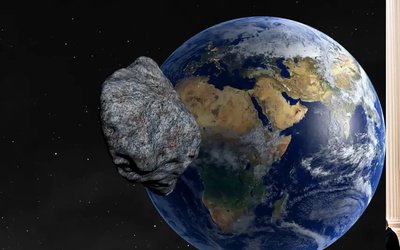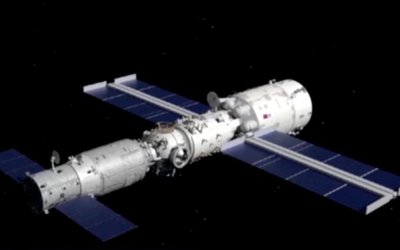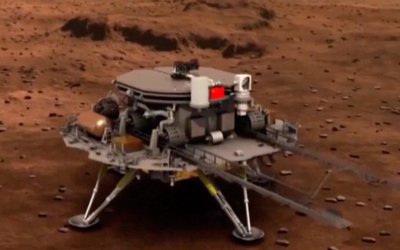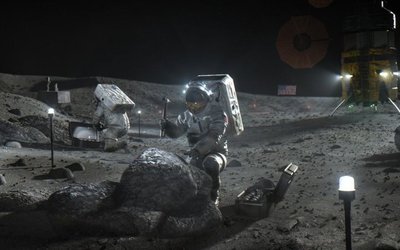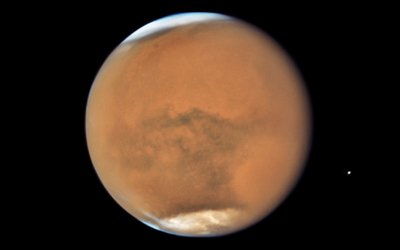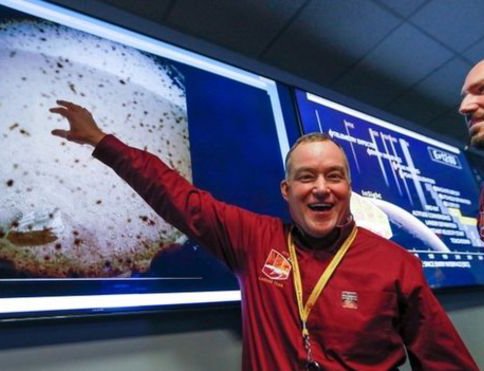
The US space agency Nasa has landed a new robot on Mars after a dramatic seven-minute plunge to the surface of the Red Planet.
The InSight probe aims to study the world's deep interior, and make it the only planet - apart from Earth - that has been examined in this way.
Confirmation of touchdown came through on cue at 19:53 GMT.
It ended an anxious wait in which the robot radioed home a series of updates on its descent.
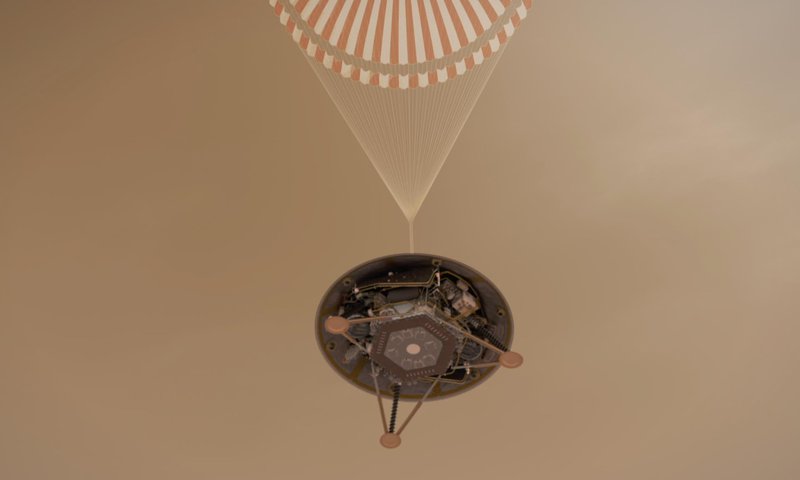
Nasa's mission control at California's Jet Propulsion Laboratory (JPL) erupted into cheers when it became clear InSight was safe on the ground.
The agency's chief administrator, James Bridenstine, celebrated what he called "an amazing day". President Trump had rung to offer his congratulations, he told reporters. And the director of JPL, Mike Watkins, said the success should remind everyone that "to do science we have to be bold and we have to be explorers."
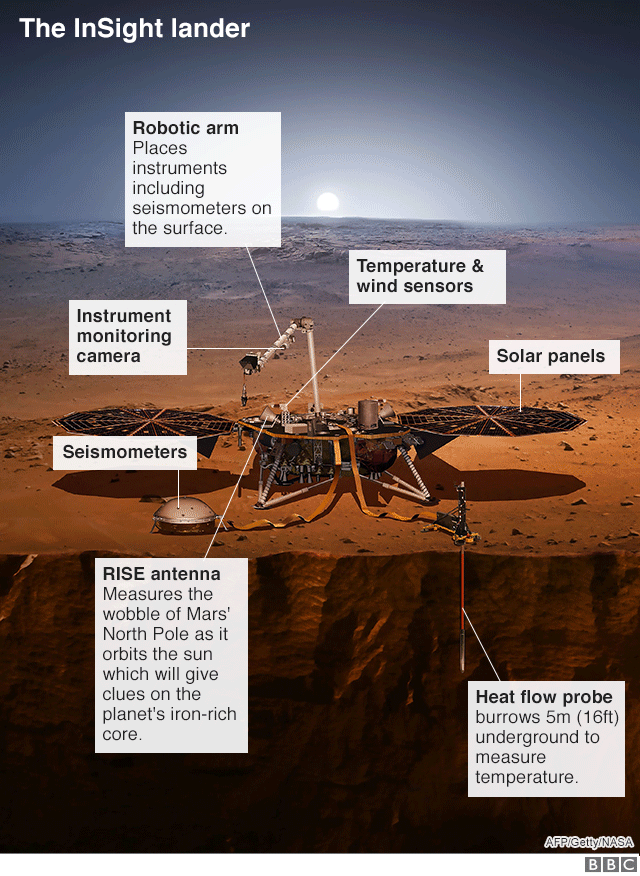
InSight is now sitting on a vast, flat plain known as Elysium Planitia, close to the Red Planet's equator. Before landing, Nasa had dubbed it the "biggest parking lot on Mars".
The first picture of this landscape came back very quickly, within minutes. It showed a smudged, fisheye view of the robot's surroundings.
The image was taken through the translucent lens cap of a camera positioned on the underside of the lander. The dust kicked up in the descent obscured much of the scene, but it was still possible to make out a small rock, one of the probe's feet and the sky on the horizon.
Better pictures will be taken in the coming days.
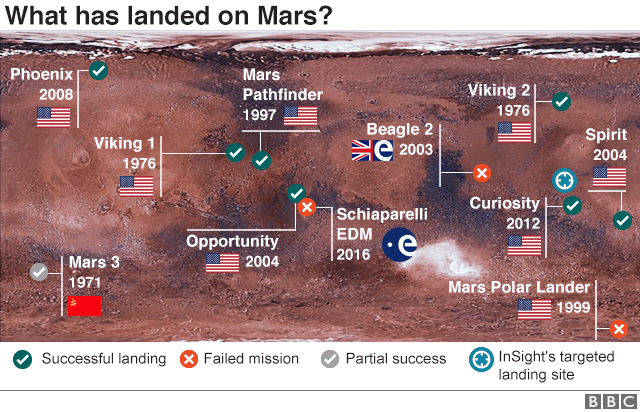
Like all previous landing attempts at Mars, Insight's race to the surface - the first attempt since 2012 - was a tense affair.
Stage by stage and metre by metre, the robot reported back its progress.
It had entered the atmosphere faster than a high-velocity bullet, using the combination of a heatshield, parachute and rockets to bring itself to a gentle stop.
Key to InSight's continued survival now on the harsh surface of Mars is the deployment of its solar panels, which were stowed for the descent.
The robot absolutely has to start generating power to operate its systems and to warm equipment in the sub-zero temperatures that persist on the Red Planet.
Only when these immediate concerns are taken care of can Nasa begin to think about InSight's scientific mission.
One of the big achievements in the InSight mission so far has been the role played by the two briefcase-sized satellites that were sent to Mars along with the robot lander.
It was these mini-spacecraft, called MarCO A and B, that relayed the probe's signals back to Earth during the plunge to the surface. The duo cost less than $20m and their technologies are now sure to feature much more prominently on future interplanetary missions.
And as if to underline their capabilities, the little satellites also took a picture of Mars.
"Having successfully brought all the data back from InSight during its exciting entry, descent and landing (EDL) sequence - what you see before you is an image taken roughly 4,700 miles from Mars, about 10-15 minutes after EDL itself," explained MarCO chief engineer Andy Klesh.
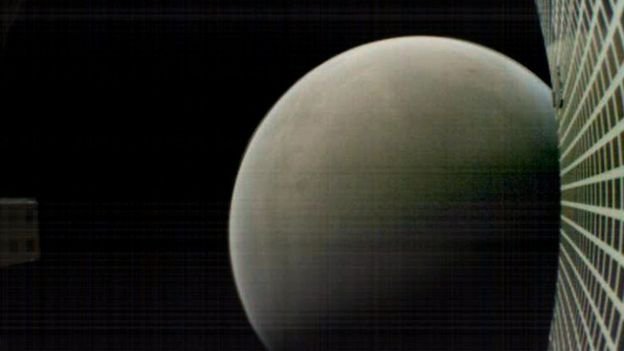
This will be the first probe to dedicate its investigations to understanding Mars' interior. Scientists want to know how the world is constructed - from its core to its crust. InSight has three principal experiments to achieve this goal.
The first is a package of Franco-British seismometers that will be lifted on to the surface to listen for "Marsquakes". These vibrations will reveal where the rock layers are and what they are made of.
A German-led "mole" system will burrow up to 5m into the ground to take the planet's temperature. This will give a sense of how active Mars still is.
And the third experiment will use radio transmissions to very precisely determine how the planet is wobbling on its axis. Deputy project scientist Suzanne Smrekar uses this analogy: "If you take a raw egg and a cooked egg and you spin them, they wobble differently because of the distribution of liquid in the interior. And today we really don't know if the core of Mars is liquid or solid, and how big that core is. InSight will give us this information."
Scientists understand very well how Earth's interior is structured, and they have some good models to describe the initiation of this architecture at the Solar System's birth more than 4.5 billion years ago. But Earth is one data point and Mars will give researchers a different perspective on how a rocky planet can be assembled and evolve through time.
InSight chief scientist Bruce Banerdt said: "The small details in how planets evolve are what we think make the difference between a place like Earth where you can go on vacation and get a tan, and a place like Venus where you'll burn in seconds or a place like Mars where you'll freeze to death."
Courtesy: BBC
- India Supported Construction Of Four Schools In Nuwakot
- Mar 19, 2021
- Nepal Denies Permission For Third Phase Trial Of Vaccine Against COVID-19
- Aug 31, 2020
- Messi Can Only Cancel Barcelona Contract If €700 Million Release Clause Is Paid, La Liga Confirms
- Aug 31, 2020
- India To Carry Out Study On Kathmandu-Raksaul Railway
- Aug 28, 2020
- COVID-19: 1,351 Personal Of Nepal Police Infected
- Aug 28, 2020

